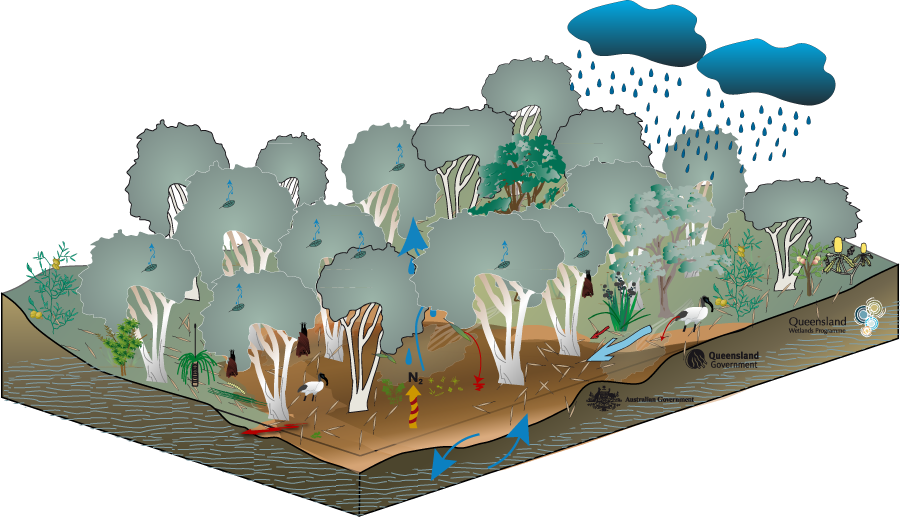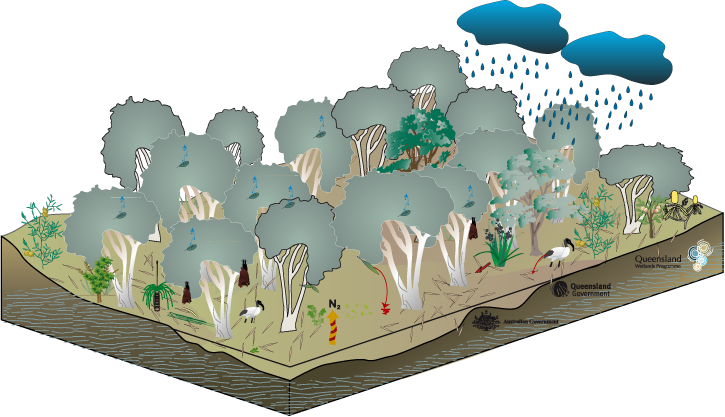|
|
Coastal and subcoastal non-floodplain tree swamp—Melaleuca spp. and Eucalyptus spp.Coastal and subcoastal non-floodplain tree swamp—Melaleuca spp. and Eucalyptus spp. – Dry phaseClick on elements of the model or select from the tabs below During dry times more water can leave the wetland (through evaporation, recharge of groundwater and/ or transpiration of plants) than enters the wetland. This causes the wetland to progressively dry, sometimes completely, while others dry up to a refuge pool, or a series of refuge pools. The drying process can have implications for water quality, by concentrating solutes and sediments in the water. Water quality and quantity changes impact the wetland’s flora and fauna species to varying degrees and they typically have adaptations to survive or escape these conditions until water returns to the wetland, starting the cycle again. Last updated: 22 March 2013 This page should be cited as: Department of Environment, Science and Innovation, Queensland (2013) Coastal and subcoastal non-floodplain tree swamp—Melaleuca spp. and Eucalyptus spp. – Dry phase, WetlandInfo website, accessed 8 May 2025. Available at: https://wetlandinfo.des.qld.gov.au/wetlands/ecology/aquatic-ecosystems-natural/palustrine/non-floodplain-tree-swamp/dry.html |

 — Department of the Environment, Tourism, Science and Innovation
— Department of the Environment, Tourism, Science and Innovation



